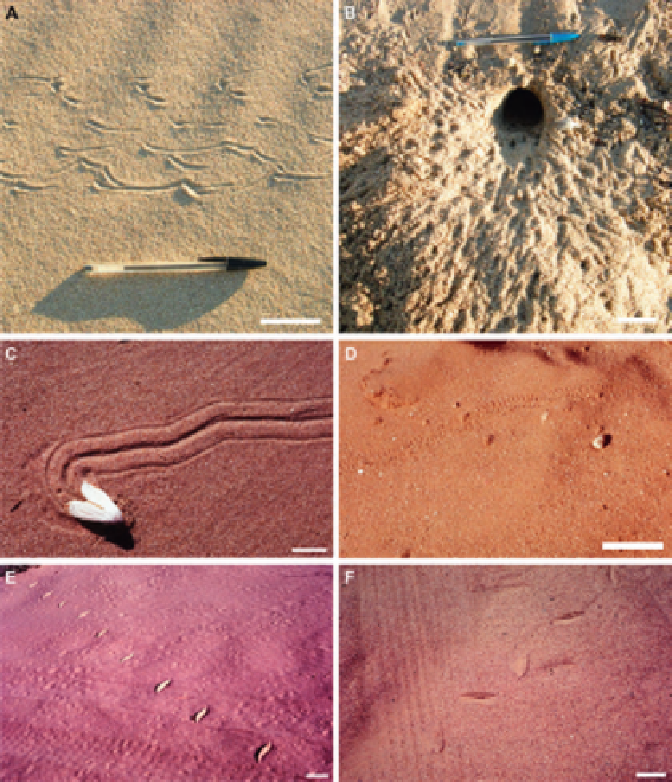Environmental Engineering Reference
In-Depth Information
FIGURE 1
Traces in modern coastal dunes. Ephemeral traces of some modern organisms on dune
surfaces along the coast of the northern Gulf of California near Puerto Pe˜asco, Sonora, Mexico.
(A) Trackway of a large fiddler crab (
Uca princeps
; scale bar
¼
5 cm). (B) Burrow opening of a large
fiddler crab (
U. princeps
; scale bar
¼
5 cm). (C) Trail of a small moth (scale bar
¼
2 cm). (D) Track-
way of a small beetle (scale bar
¼
3 cm). (E) Trail of a sidewinder rattlesnake (
Crotalus cerastes
;
scale bar
¼
ca. 15 cm). (F) Trail of a gopher snake (
Pituophis catenifer
; scale bar
¼
ca. 10 cm).
The ichnogenera
Chelichnus
and
Basilichnium
(both tetrapod footprints) are
characteristic. The authors regard this trace-fossil association as representative
of eolian dune paleoenvironments, but their definition of this ichnofacies is
quite restrictive, and they note that it applies only to rocks in three geologic
periods (Permian through Jurassic).
The
Octopodichnus
Ichnofacieswas proposed for a trace-fossil association that
“consists exclusively of a lowdiversity ofwalking traces (repichnia) of arthropods,










Search WWH ::

Custom Search